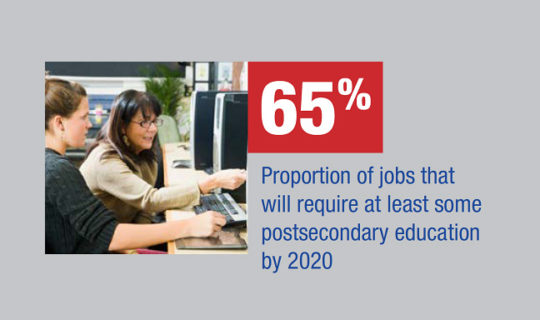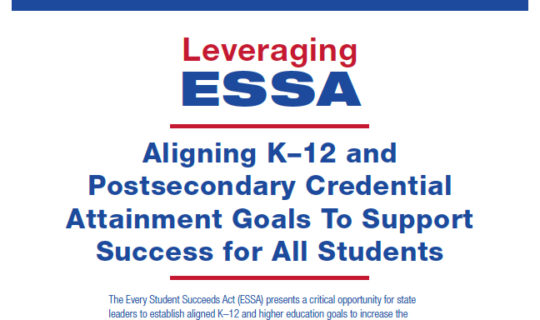Resource: Leveraging ESSA: Shining a Spotlight on K-12 and Higher Ed Alignment
The Every Student Succeeds Act (ESSA) presented a vital collaborative opportunity for K–12 and higher education leaders to make college and career readiness a priority and build seamless postsecondary transitions. After reviewing ESSA plans from all 50 states and the District of Columbia, it is apparent that states — to varying degrees — took advantage of this opportunity to double down on alignment for student success. True success will be determined by how states execute their planned alignment strategies.
Over the past several years, K–12 and higher education leaders across the country have partnered to make college and career readiness a priority and build seamless secondary to postsecondary transitions. With the passage of the Every Student Succeeds Act (ESSA), states have an invaluable opportunity to double down on alignment for student success.
K–12 and higher education collaboration can deliver an education system that closes equity gaps, improves the earning potential of our citizens, and allows our states to cultivate a robust workforce that is capable of sustaining and building a 21st century economy.
From Planning to Action: The Opportunity Remains
ESSA presented a clear opportunity for leaders from both sectors to formalize their shared ownership for long-term student success, and many states took advantage of this opportunity. Forty-eight states and the District of Columbia incorporating at least one strategy recommended in the Leveraging ESSA series, and ten states including three or more, demonstrating significant alignment. All states must now shift from plan to action and ensure that alignment is sustainable into the future. From now into the future, state K–12 and higher education leaders are in the driver’s seat to create policies and programs that lead to postsecondary preparation and success. As each sector works to institutionalize high expectations and deep supports for students, cross-sector partnerships will remain critical. Neither sector can be successful on its own. Students’ preparation for careers hinges on this alignment. Working together, K–12 and higher education can propel the escalator of upward mobility.







